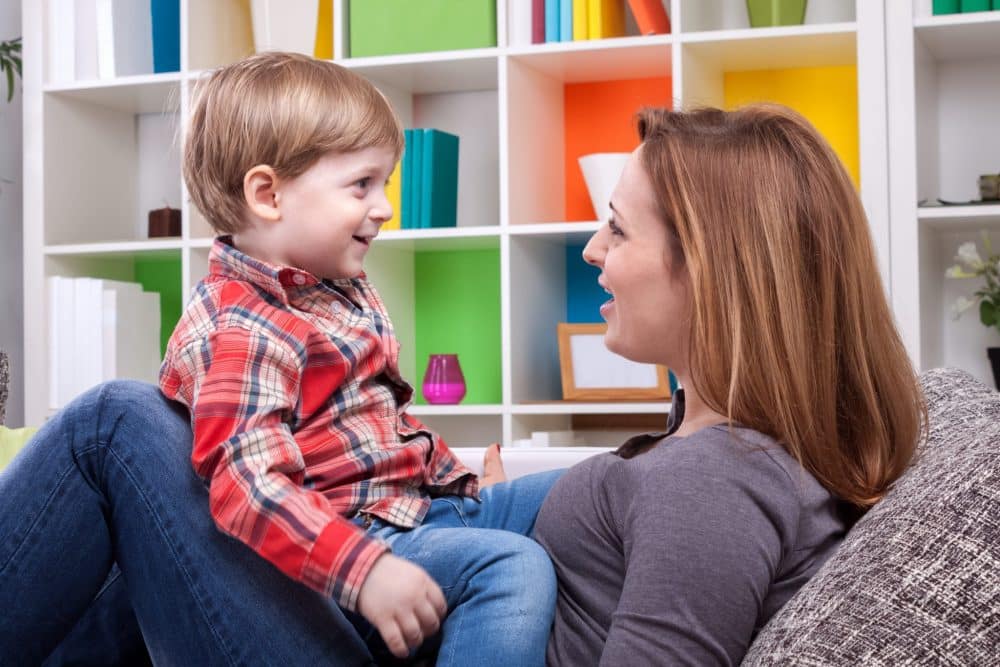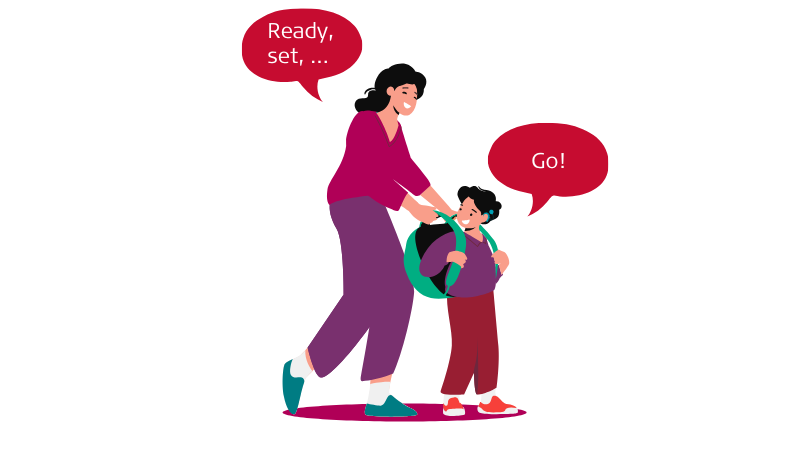
MED-EL
Published Nov 25, 2016 | Dec 04, 2024
Use Auditory Closure to Build Listening and Speaking Skills
Using auditory closure exercises can help your child with cochlear implants as they start developing listening and speaking skills. Find out what this valuable and enjoyable method is, and try it out yourself with the help of these tips.

What is Auditory Closure?
Auditory closure (sometimes known as pause, prompt) is an interactive method where you say the beginning of a phrase or sentence and wait for your child to complete it. You might begin a song, rhyme, or sentence and then stop talking to encourage your child to fill the next sound, word, or phrase. For example, if you’re playing with a toy car, you might say, “Ready? 1, 2, 3, …” and expectantly look at your child to encourage them to say, “Go!”
Auditory closure exercises help children engage more actively in communication and make listening and speaking part of everyday fun.
By weaving auditory closure activities into daily routines, you can support your child’s language development in natural, enjoyable ways.
Sometimes we hear only a part of what is said, and people with sophisticated language skills can use what they know to figure out the missing bit. Using auditory closure in a fun way helps children practice listening for the clues that will help them understand and fill in the blanks.

Fun Auditory Closure Activities to Try at Home
Here are some practical and playful ways to incorporate auditory closure into your child’s routine at home.
-
Sing Familiar Songs Using Auditory Closure
Choose songs familiar to your child, like “Twinkle, Twinkle Little Star.” Sing the song together at first to check that your child knows all of the words. Then, sing again, pausing here and there to give your child the chance to fill in the word that comes next. It is easier to have them fill in the last word of each sentence when they are still learning, e.g., “Twinkle, twinkle, little …. How I wonder what you …”.
Auditory closure with songs and rhymes builds your child’s confidence and makes them excited to join in with the shared singing. You could practice with a sibling or friend to model how to fill in the gaps. Rhymes and rhyming stories are useful for older children, and also help develop their phonemic awareness, for example, “There is a dog hiding behind a log and here is a cat sleeping on a ….”
-
Add a Physical Activity With Auditory Closure Cues
Adding movement makes auditory closure more dynamic and fun. Try this during playful moments like pushing your child on a swing. Pull the swing back, then say something like, “Ready, steady, …” and wait for them to say, “Go!” before pushing them.
This type of auditory closure activity introduces anticipation, motivating them to respond with the correct word to get the result they want. You can also try this on a slide, in the car, or during other playtime activities.
-
Make Lists Together Using Auditory Closure
Creating lists together is a natural way to use auditory closure. For example, when setting up for a craft project, name each item you need, such as paper, scissors, and glue. Then pause before the last item and encourage your child to complete the sentence.
This auditory closure technique can be used when setting the table, choosing clothes, or preparing snacks. For example, “We need bread, cheese, and…?” This helps reinforce vocabulary and listening comprehension.
-
Use Common Pairs With Auditory Closure
Using everyday word pairs or opposites like “sock and shoe” or “day and night” is another effective auditory closure activity. Say the first part of the phrase, pause, and then encourage your child to finish it.
Reading books or playing games that include these pairs can further support auditory closure practice, helping your child recognize familiar patterns in language.
Why Auditory Closure is Effective for Building Language Skills
Auditory closure is a proven method to encourage children to move from passive listening to active participation. They learn to listen for auditory cues and identify language patterns, improve their vocabulary, and gain confidence in communicating.
By making auditory closure exercises a regular part of your child’s daily routine, you’ll help them develop listening and talking skills while also making communication a fun and natural part of their day.
Try incorporating these auditory closure activities into your daily interactions, and enjoy watching your child’s language skills flourish!
References
-
[1]
Fickensher, S. & Slavucci, D. An Introduction To Educating Children Who Are Deaf/Hard Of Hearing. Chapter 7 Listening & Spoken Language Strategies. E-Book
-
[2]
Utah State University. AUDITORY CLOSURE A Listening and Spoken Language Strategy Auditory Closure 3.18.18_ENGLISH.pdf
References

MED-EL
Was this article helpful?
Thanks for your feedback.
Sign up for newsletter below for more.
Thanks for your feedback.
Please leave your message below.
Thanks for your message. We will reply as soon as possible.
Send us a message
Field is required
John Doe
Field is required
name@mail.com
Field is required
What do you think?
© MED-EL Medical Electronics. All rights reserved. The content on this website is for general informational purposes only and should not be taken as medical advice. Contact your doctor or hearing specialist to learn what type of hearing solution suits your specific needs. Not all products, features, or indications are approved in all countries.

MED-EL

MED-EL


